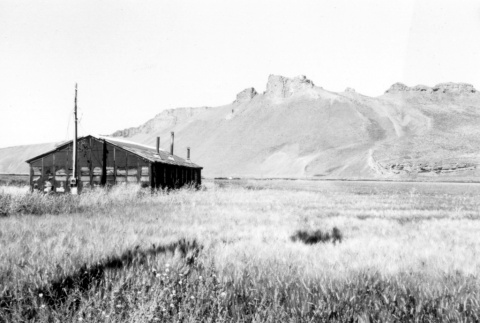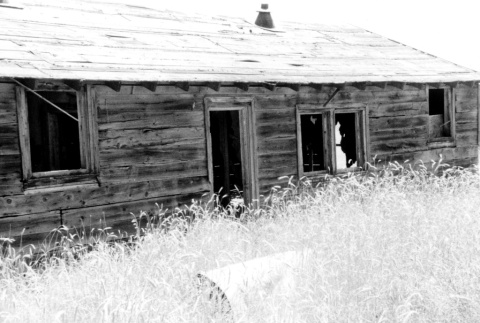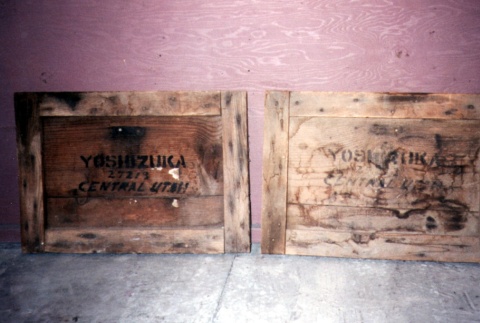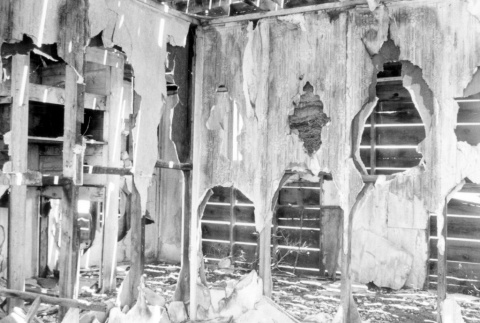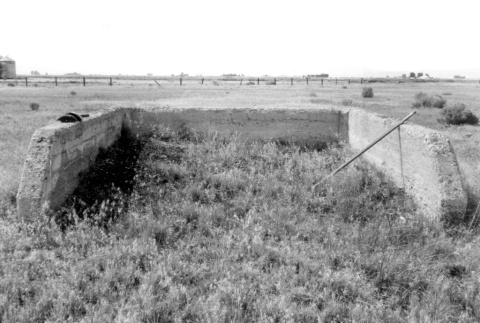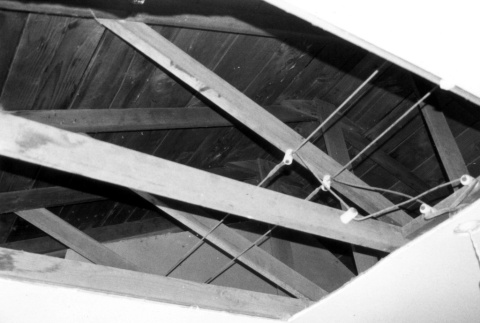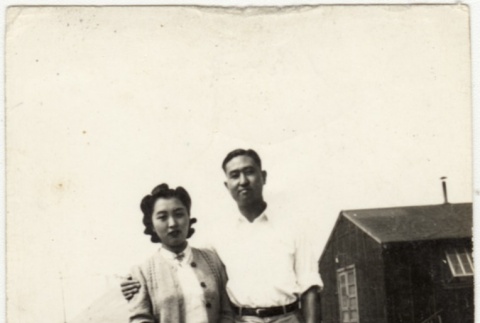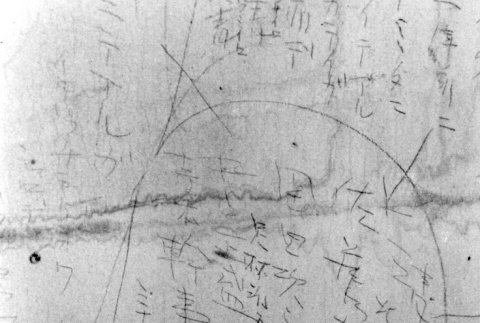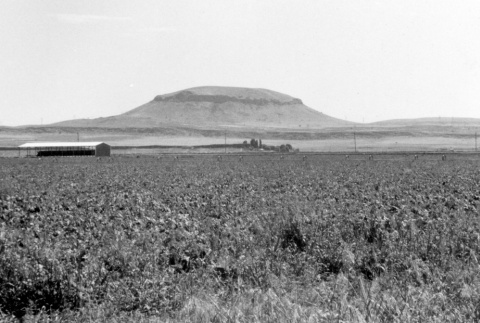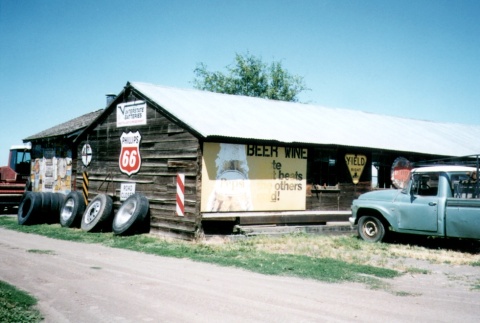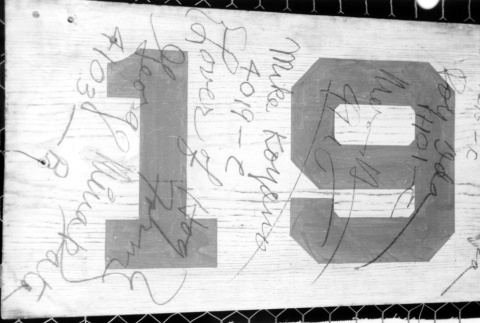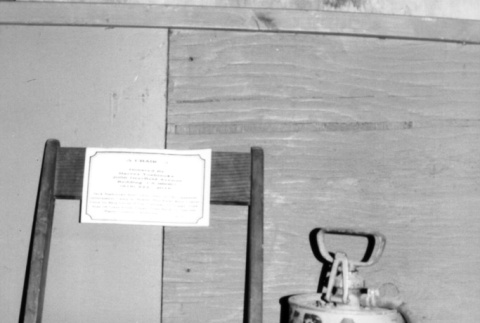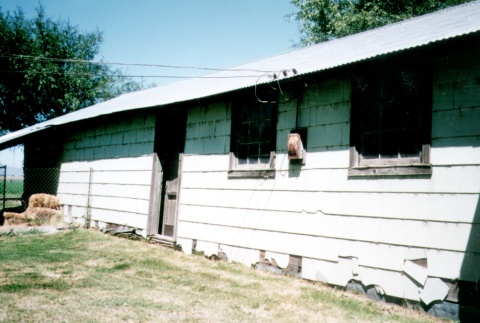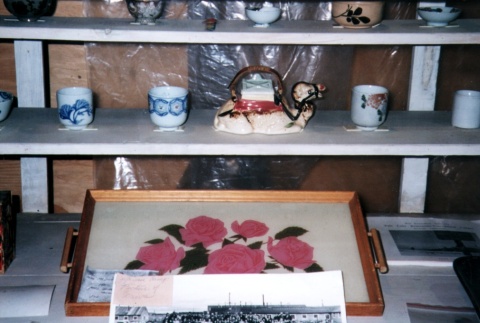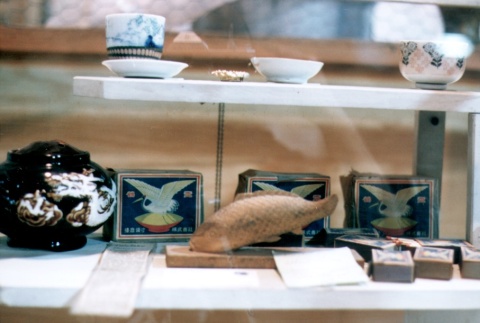2569 items
2569 items
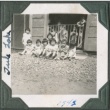
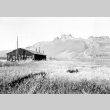
img
Exterior of barracks and Castle Rock (ddr-densho-35-4)
These barracks are now on the property of a Tule Lake farmer. A rock formation that the Japanese Americans called "Castle Rock" can be seen in the background. After obtaining permission to go through the gates, camp inmates could climb to the top of the formation.

img
Exterior of barracks (ddr-densho-35-15)
These barracks are one of two owned by a local farmer. The exterior has not been renovated.
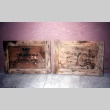
img
Artifacts, Tule Lake concentration camp (ddr-densho-35-38)
The Tule Lake Museum, located on the fairgrounds, displays artifacts from the Tule Lake concentration camp. Shown here are parts of a wooden crate that presumably held items belonging to a camp inmate. The 27213 designation was probably the owner's family number.
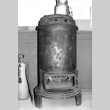
img
Coal-burning heater (ddr-densho-35-25)
The Tule Lake museum, located on the town's fairgrounds, contains artifacts from the Tule Lake concentration camp. Coal-burning heaters such as the one shown here were the primary source of heat for the camp inmates.

img
Washroom foundation (ddr-densho-35-19)
This is a foundation from an old washroom. The Japanese Americans in camp did not have private washrooms, showers, toilets, or laundries. Each block, made up of approximately twelve barracks, shared such facilities.

img
Exterior of barracks (ddr-densho-35-6)
Local farmers now own a few barracks from the Tule Lake concentration camp. The buildings are used for storage, have been made into homes and garages, or are abandoned, like this one. The exterior of the barracks have remained almost untouched since World War II.

img
Washroom foundation (ddr-densho-35-18)
This is a foundation from an old washroom. The Japanese Americans in camp did not have private washrooms, showers, toilets, or laundries. Each block, made up of approximately twelve barracks, shared such facilities.

img
Interior of barracks (ddr-densho-35-16)
These barracks are one of two owned by a local farmer. The interior appears to have been untouched since World War II.

img
Boiler-room foundation (?) (ddr-densho-35-20)
This is believed to be the foundation of an old boiler room. The barracks apartments did not have running water. If a Japanese American wanted water, he or she would have to go to a communal facility such as the washroom. The boiler heated the water for the washroom, shower, and laundry.
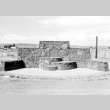
img
Monument (ddr-densho-35-2)
In 1979, to commemorate the Tule Lake concentration camp, the Japanese American Citizens League and the California State Department of Parks and Recreation erected this monument, located outside the stockade area.
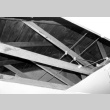
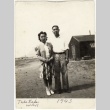
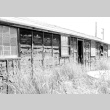
img
Exterior of barracks (ddr-densho-35-5)
These barracks housed Japanese Americans during World War II. There were approximately twelve barracks to a block and six apartments per barracks. Each apartment was 100 x 20 feet and housed one family. The exterior of these barracks have remained virtually untouched since World War II.
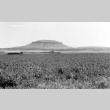
img
Former site of Tule Lake concentration camp, California (ddr-densho-35-17)
Japanese Americans at the Tule Lake concentration camp called this natural formation "Abalone Hill" because of its shape. Abalone Hill and Castle Rock are two major formations near the camp area.
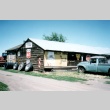
img
Exterior of barracks (ddr-densho-35-42)
Local farmers currently own several barracks from the Tule Lake concentration camp. Some barracks have been made into homes, while others, like the one shown here, have been converted into storage areas.

img
Guard tower foundation (?) (ddr-densho-35-3)
This foundation remnant, presumably from a guard tower, is located outside the barbed-wire fence surrounding the stockade.
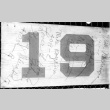
img
Board with apartment number (?) (ddr-densho-35-23)
The Tule Lake Museum, located on the town's fairgrounds, contains a display of artifacts from the Tule Lake concentration camp. This wooden marker is from a barracks apartment.

img
Artifacts (ddr-densho-35-24)
The Tule Lake Museum, located on the local fairgrounds, houses a display of artifacts from the Tule Lake concentration camp. The chair was probably handcrafted by a camp inmate.
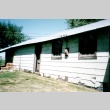
img
Exterior of barracks (ddr-densho-35-43)
Local farmers currently own several barracks from the Tule Lake concentration camp. Some barracks have been made into homes, while others, like the one shown here, have been converted into storage areas.

img
Artifacts (ddr-densho-35-22)
The Tule Lake Museum is located on the local fairgrounds and contains a display of artifacts from the Tule Lake concentration camp. The large searchlight is from a camp guard tower. Coal-burning stoves such as this one, presumably from barracks apartment, were the main source of heat for the Japanese Americans. To the left of the …

img
Artifacts (ddr-densho-35-40)
The Tule Lake Museum, located on the local fairgrounds, houses a display of artifacts from the Tule Lake concentration camp. Shown here are a variety of tea and sake cups, a teapot, and a bunka (Japanese embroidery) picture. The photo below is a panoramic view of the camp.
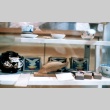
img
Artifacts (ddr-densho-35-41)
The Tule Lake Museum, located on the local fairgrounds, houses a display of artifacts that belonged to Japanese Americans from the Tule Lake concentration camp.

